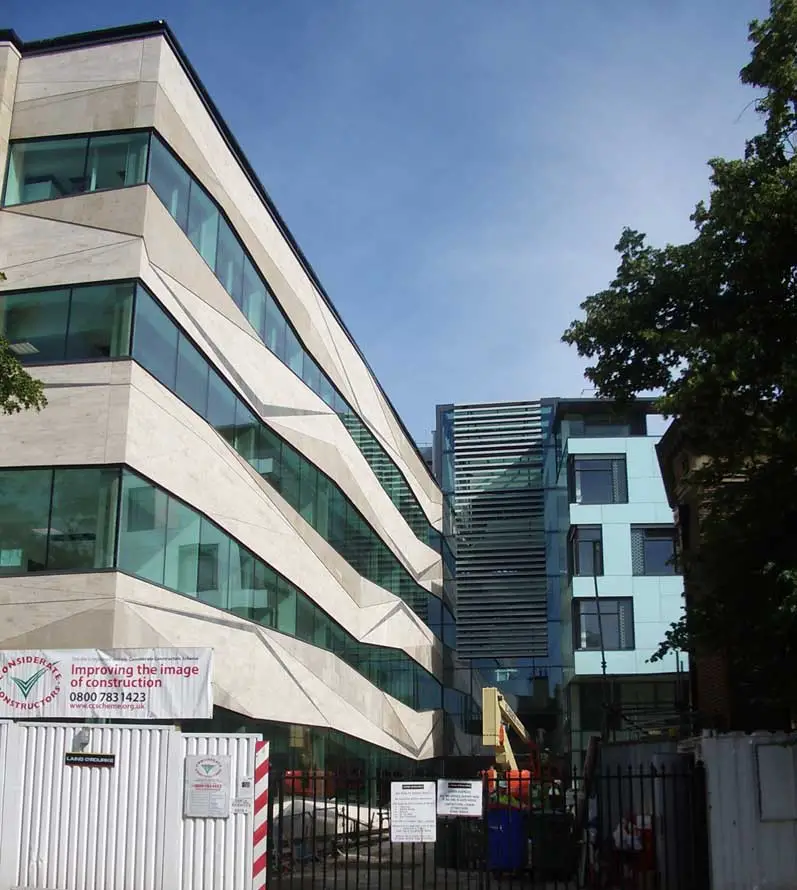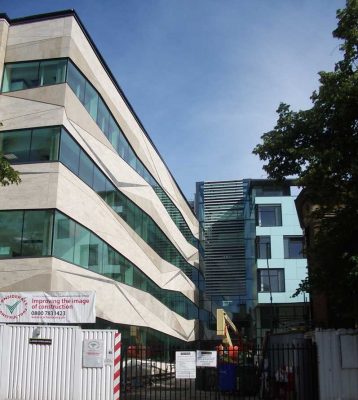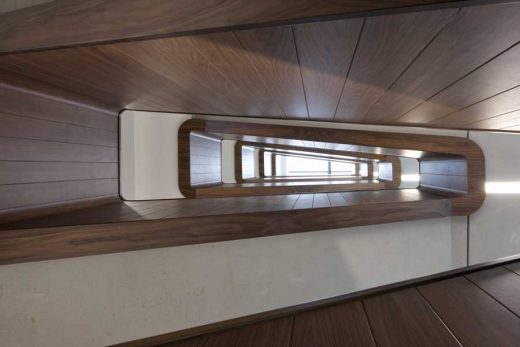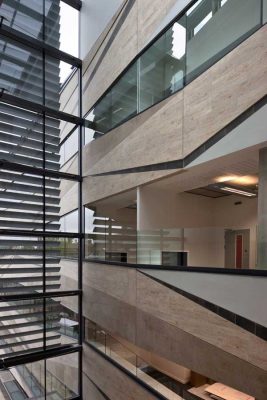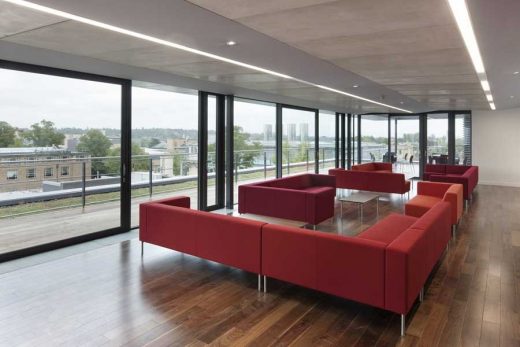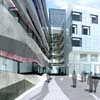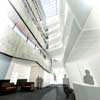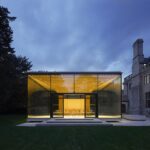University of Oxford Department of Earth Sciences, Architect, Higher Education Building Photos
Oxford University Department of Earth Sciences, UK
Higher Education Building, South Parks Road, England design by Wilkinson Eyre Architects
15 Oct 2010
Department of Earth Sciences Building
Design: Wilkinson Eyre Architects
University of Oxford Department of Earth Sciences now completed.
Photos: Morley von Sternberg
The new building, designed by award-winning architects, Wilkinson Eyre houses the Earth Sciences Department of nearly 400 students and staff. It includes up-to-date teaching rooms, laboratories and administration offices. The 5000 square metre building has been constructed on the site of the old Central Chemistry building on South Parks Road.
University of Oxford Department of Earth Sciences
About the project
This is a major new teaching and research building for the University of Oxford’s Department of Earth Sciences. Located in the University’s Science Area, the building occupies a confined site close to several listed buildings and is intended to not only meet the functional and academic requirements of the Department, but also signal to the wider public the interests and concerns of the users.
About the design
In line with Wilkinson Eyre’s design philosophy, the concept for the new Department of Earth Sciences building is based on close analysis of the brief and context. Set on the edge of Oxford’s historic city centre, the site forms part of the University Science Area, and the architecture of the building responds to – and acts as a conduit between – these contrasting contexts. The design concept is based on a clear organisational diagram with the laboratories housed in a stone-clad wing set orthogonal to South Parks Road, the offices and administrative activities in a glazed wing set back from the road on axis with the adjacent Dyson Perrin building, and the main entrance and service core occupying an atrium space between.
The narrative of the design was carefully developed at the concept stages in order to create a building that would work as an ‘as found’ object, telling the story of its users in the same way that the occupants might place a fossil within a particular era of the earth’s history. This idea is embodied in the ‘narrative wall’ which is the building’s most striking element, acting as a ‘shop front’ for the Department and leading visitors from South Parks Road into the public spaces at the heart of the building. The wall divides the public and social areas of the building from the more introverted spaces of the laboratory wing, and establishes the logic for the building’s principal internal circulation.
The building’s internal layout was also structured following a careful initial analysis of the relationships within the Department. The ground floor space is focused on outreach, with the more public areas of the building such as the library, foyer and display spaces close by. Write-up spaces are separated from the main laboratory areas, which are serviced in a simple, pragmatic way. Generous circulation provides for interaction as users move around the building. Social spaces, such as the Senior Common Room, are located at the top of the building in order to make the most of natural light and views across the city.
This building will provide a new home for an academic department with a strong interest in sustainability through their research into climate change. The architecture is therefore expressive of this concern with the environment.
The accommodation includes heavily serviced specialist laboratory spaces and metal free clean laboratories. As a result, a key challenge was to ensure that these spaces are as energy efficient as possible and that the building’s energy consumption could be reduced through the use of active sustainable technologies. The building therefore incorporates 63 boreholes that are 65m deep beneath its footprint; these are part of a ground source energy system providing a predicted 28% energy consumption saving, a related 17% reduction in carbon emissions and a 17 year payback period.
The laboratories are also divided from the office wing so that the less serviced office spaces can benefit from natural ventilation. In summer, the simple passive design uses the thermal mass of the building for cooling, and solar gain is reduced through the use of user-controlled external blinds.
These features are combined with a structure and building envelope designed to be highly efficient and provide robust passive environmental benefits. The selection of a post-tensioned slab structural system for the building reduced the volume of concrete used by 10%. GGBS cement replacement is used throughout the structural elements and off-site pre-casting of columns, stairs and cladding panels has minimised waste and made for a very efficient construction programme.
The building has been designed to be flexible for future changes in layout, with very high floor-to-ceiling heights in the labs and very few load-bearing subdivisions, allowing for the internal walls to be moved if necessary. The design and selection of materials for the façades of the building was carefully considered and developed over the course of the project. Due to their interest and expertise, the Department was closely involved in the key decision-making stages.
The narrative wall – which draws visitors into the entrance 36m from South Parks Road – is formed from bands of precast concrete panels faced with three types of stone. Taking the horizontal subdivisions created by the more regular openings in the laboratory and office wing façades as a starting point, the wall is then divided further into vertical sections that are derived from the Earth Sciences subject areas. This sets up an apparently random distortion within the horizontal bands reminiscent of the banded formation found in rock strata.
The apparently random appearance is in fact formed from an underlying repeating geometrical pattern based on a set number of panel types. Each of the narrative wall panels contains bands of Jura limestone (from Germany) in two shades and two thicknesses. The bands are made up of 600mm high courses with random vertical joints which lend the 7.2m long panels a degree of human scale. The joints between the bands are carefully articulated to add emphasis to the panels and slices of Purbeck Feather limestone (from Dorset) provide further contrast.
At ground floor level the wall splits more dramatically, appearing to hover over a glass skirt; this creates a greater degree of transparency to the exterior and an opportunity for displays about the Department and its activities. The lowest bands of the wall form deeply folded, three-dimensional planes which provide a further layer of visual interest where passersby interact most closely with the building.
This strategy creates a dynamic façade running along the east side of the laboratory wing. It is then wrapped around and below the projecting upper floors of the laboratory wing to embrace the more rectilinear block above. This wall is mainly experienced obliquely as one moves along South Parks Road in relation to the building and the design of the hard landscaping here and within Le Gros Clark Place is seen as an extension of the wall treatment.
In order to relate more closely to the context of the adjacent buildings in South Parks Road and the sensitive urban fabric of Oxford, the laboratory wing of the building is clad in Clipsham stone-faced precast concrete panels. Clipsham is a Jurassic limestone sourced from Lincolnshire and is used in the cladding of a number of nearby historic buildings. These elevations also feature large punched windows which both provide good daylighting conditions to the laboratories while also referencing the large windows in the neighbouring listed Dyson Perrins Laboratory.
To provide a degree of contrast and articulate its disparate function, the office wing is clad in composite glass panels, also with punched windows to a similar, but scaled down proportion. A similar interlocking pattern is also repeated in both the Clipsham stone façade of the laboratory wing and the glass cladding of the office. This play of different scales reflects the different floor-to-floor heights of the two wings while providing a visual link between them.
At roof level the plant to the laboratory block is enclosed in a zinc-finished roof with four expressive rendered chimneys which contain and conceal the main services terminations for the laboratories below. The chimneys form strong architectural elements that puncture the roofline of the building, echoing the wider context of Oxford.
University of Oxford DoES – Building Information
Gross Internal Area: 7,100 sqm
Construction Value: £29.5m
Consultant Team Appointed: Mar 2006
Contract: Two stage Design and Build
Start on Site: Jul 2008
Practical Completion: Sep 2010
Completion of Landscape Works: Dec 2010
University of Oxford Department of Earth Sciences – Design Team
Client: The University of Oxford
Architect: Wilkinson Eyre Architects
Structural Engineer: Pell Frischmann
Services Engineer: Hoare Lea Building
Project Manager: RB Development Management
Cost Manager: EC Harris
Laboratory Planner: HDR CUH2A
Contractor: Laing O’Rourke
Brit Insurance Design Awards : 2011 Nominee
Previously:
Oxford says yes to new University building
12 Sep 2008
University of Oxford Department of Earth Sciences
Oxford City Council’s Strategic Development Control Committee has granted planning permission for the University of Oxford to build a new Department of Earth Sciences.
The Department of Earth Sciences at the University of Oxford is one of the best in the world. It conducts research and teaching on a wide range of topics from the workings of the climate system to the causes of earthquakes and volcanic eruptions.
The building has been designed to meet not only the academic requirements of the department but also as a physical expression of the subjects taught and researched. The long east elevation, the ‘narrative wall’ leads into the heart of the building and is clad in linear folded planes of stone: Purbeck Cap limestone with inclusions of darker Purbeck Grub and transluscent stone-laminated glass. Taken as a whole, with shifting striations through it, this facade can be read as being reminiscent of certain geological features.
The building is arranged as a simple diagram with a wing of highly serviced laboratories and a wing of academic offices separated by a stair – the hinge – and an atrium. A common room and terrace on the roof provides a key point for quieter private academic interaction amongst the earth scientists. The ground floor contains the more public activities: foyer, knowledge research centre, seminar spaces and undergraduate teaching labs.
Stafford Critchlow, Director of Wilkinson Eyre Architects comments:
“It is a rare opportunity to express the diagram of a building’s uses so clearly in its architecture and to be able to imbue the facades with a ‘narrative’ inspired by its users – this building, with a big sustainable agenda, will raise the profile of earth sciences research and its importance in Oxford and the wider world.”
Professor Philip England, Head of the Department of Earth Sciences, said:
I am delighted that our new building has received planning permission. We have been sorely in need of modern laboratory and teaching space, and this building will give us a tremendous facility in which to carry out our work.
The building is due to start on site this month, construction will begin late Autumn, with completion expected by Summer 2010.
University of Oxford Department of Earth Sciences images / information from Caro
University of Oxford Department of Earth Sciences – Property Information
Architect: Wilkinson Eyre Architects
Client: University of Oxford
Structural Engineer: Pell Frischmann
Consulting engineers: Hoare Lea
Appointed: Mar 2006
Area: 5,000 sqm
Value: £29m
Wilkinson Eyre Architects
Location: South Parks Road, Oxford, England, UK
Oxford Building Designs
Oxford Architecture Design – chronological list
Oxford Architectural Walking Tours by e-architect
Oxford Architectural News – architectural selection below:
Rhodes House convening centre
Design: Stanton Williams, Architects
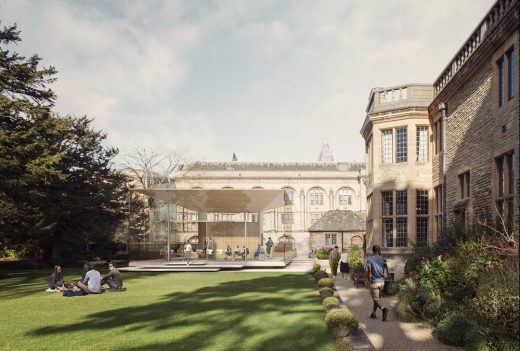
image : Picture Plane
New Life and Mind Building, University of Oxford
Architects: NBBJ
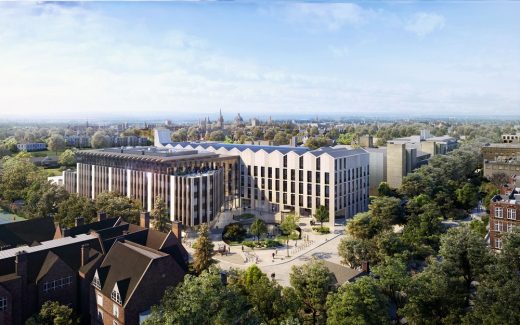
images courtesy of architecture practice
New Life and Mind Building University of Oxford
Oxford Architecture Walking Tours
Maggies Oxford
Maggies Oxford by Wilkinson Eyre
University of Oxford Department of Earth Sciences Shortlist
Bennetts Associates, David Chipperfield, Kohn Pederson Fox, Wilkinson Eyre
Part of Rafael Vinoly masterplan – former Radcliffe infirmary site
Oxford College Building : Corpus Christi
Wilkinson Eyre Architects Buildings
Galleries of Modern London, England
Wilkinson Eyre Architects
Museum of London
Siemens Urban Sustainability Centre, London, UK
Pringle Brandon / Wilkinson Eyre / Arup
Siemens Urban Sustainability Centre
Southampton Sea City project, England
Southampton Sea City project
Comments / photos for the University of Oxford Department of Earth Sciences page welcome
Visit Oxford

